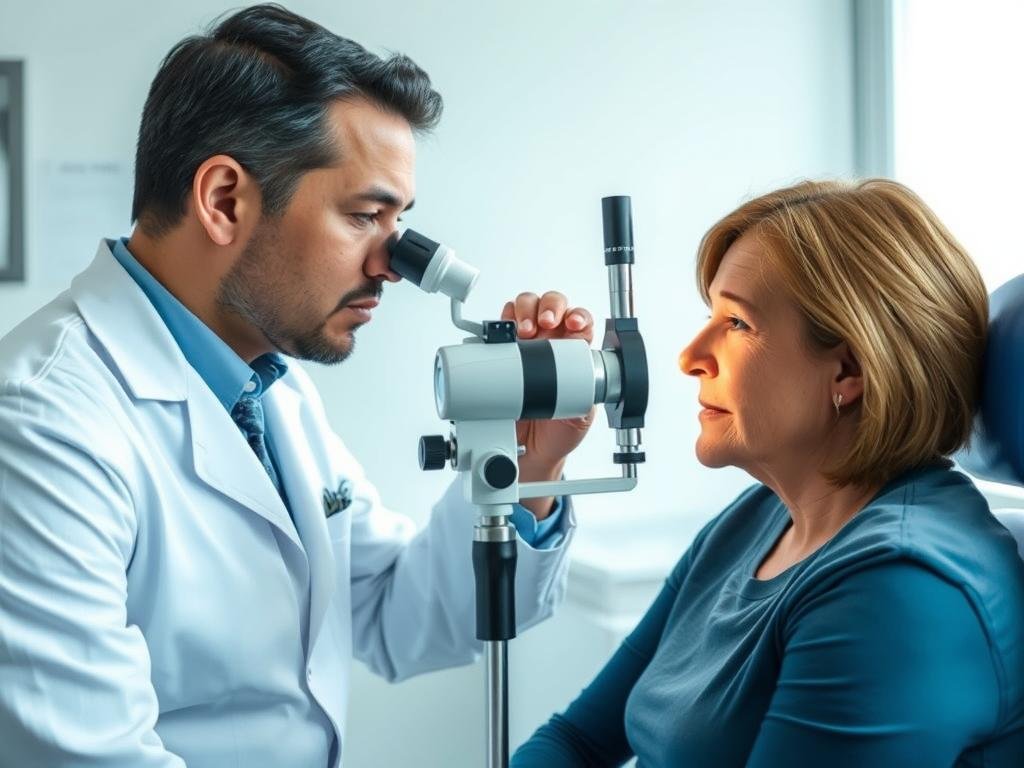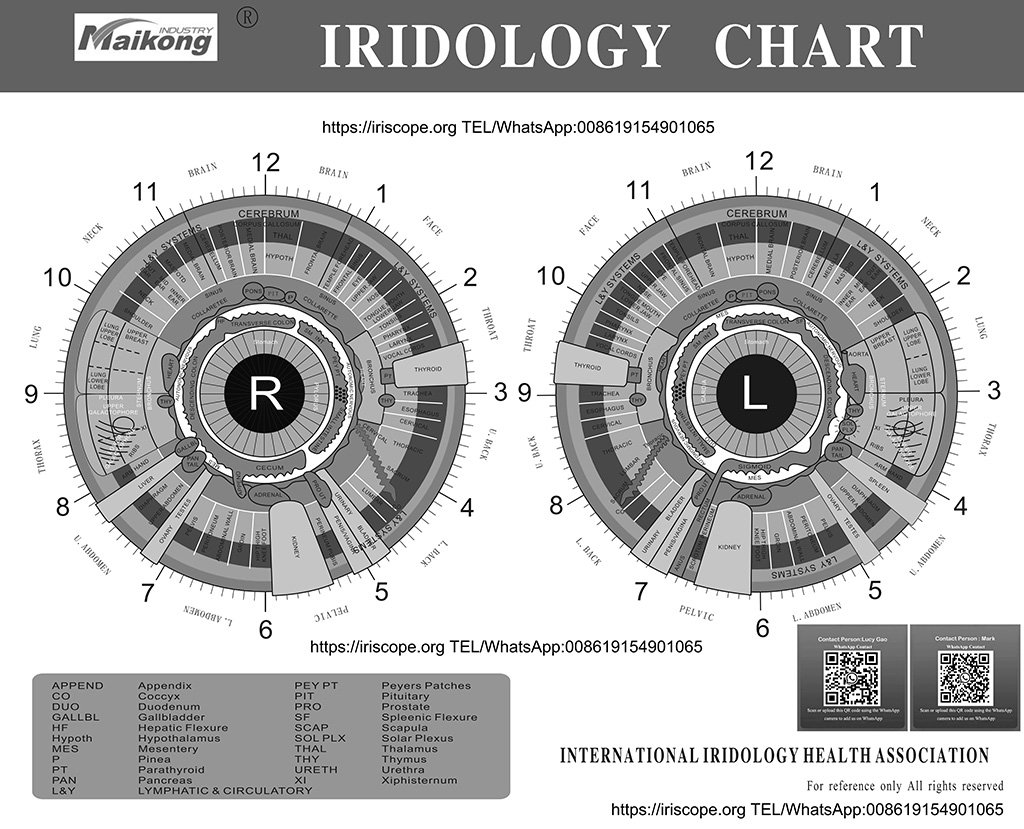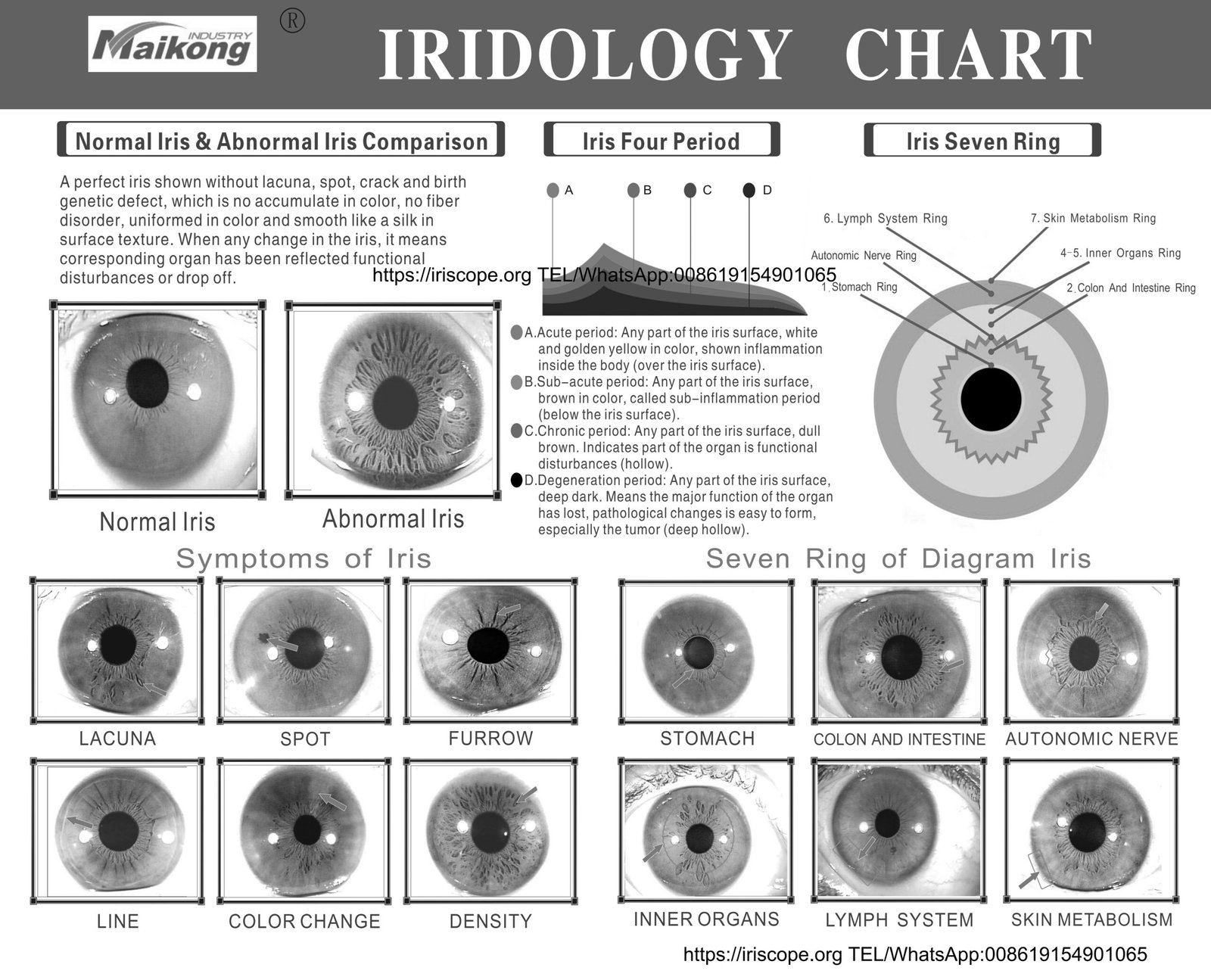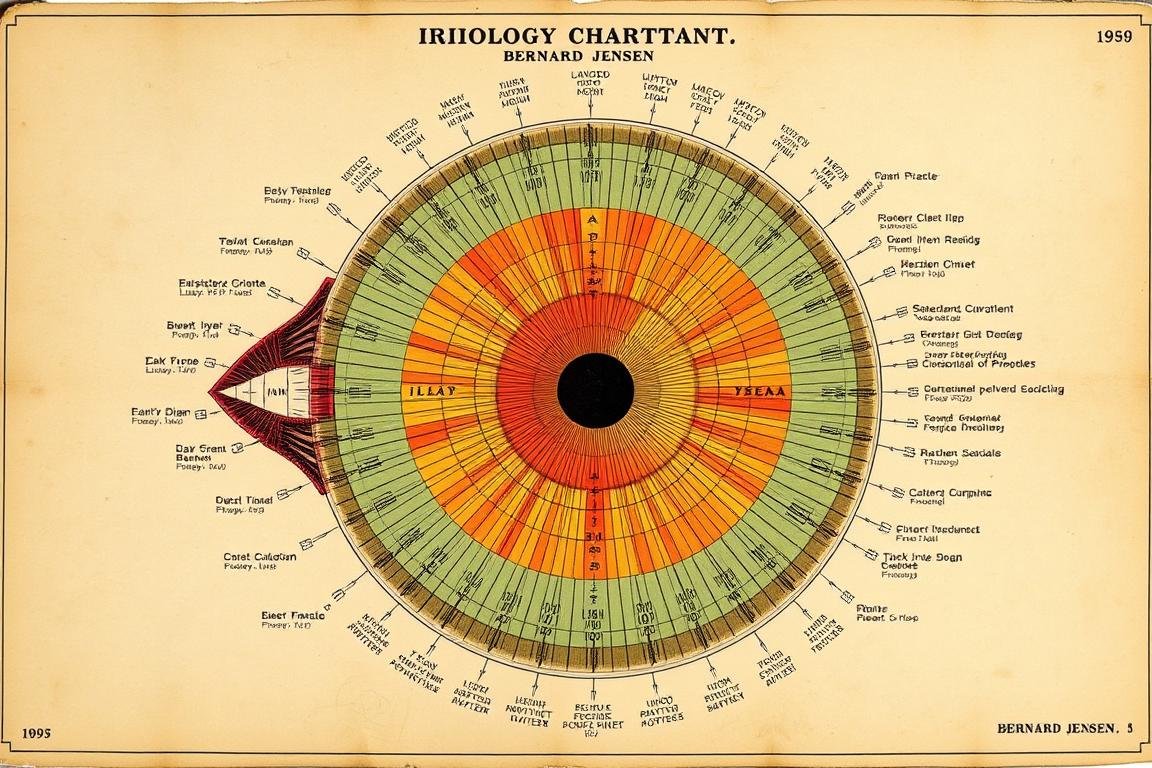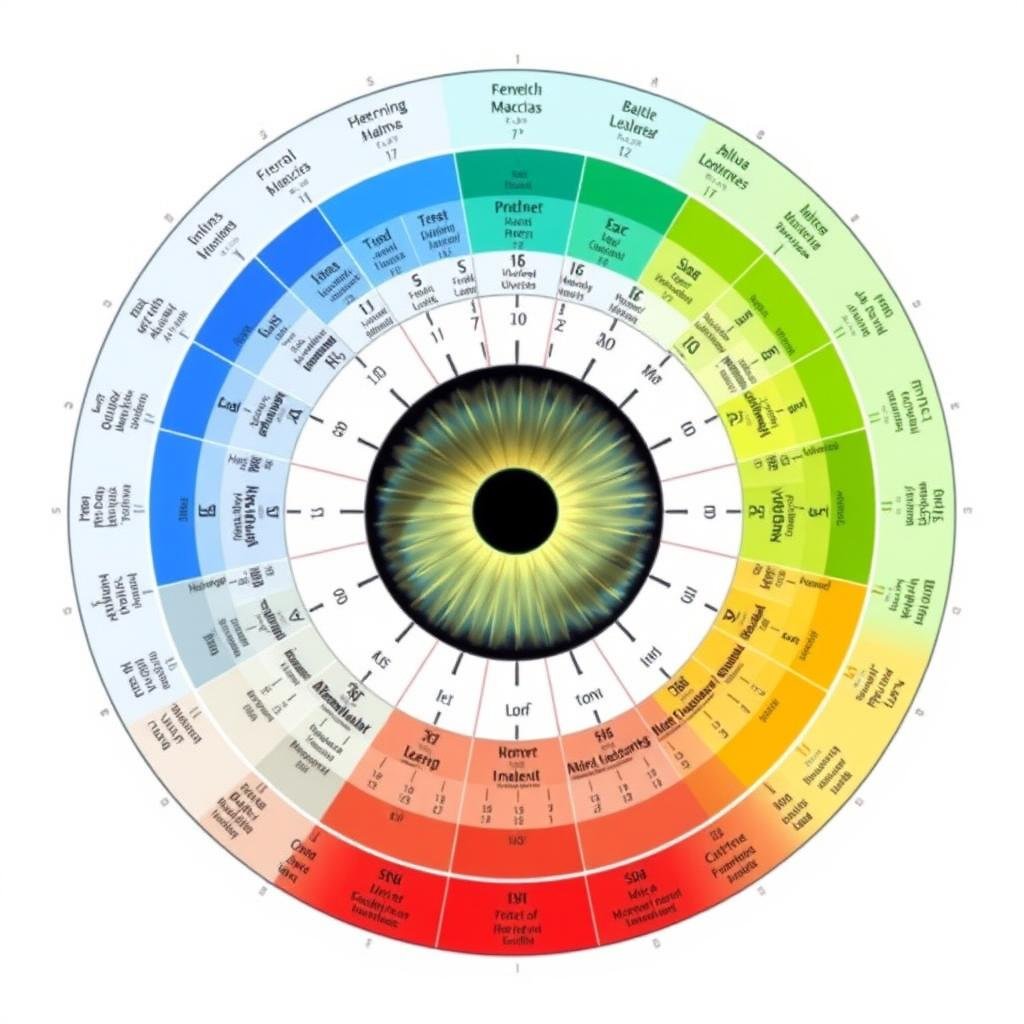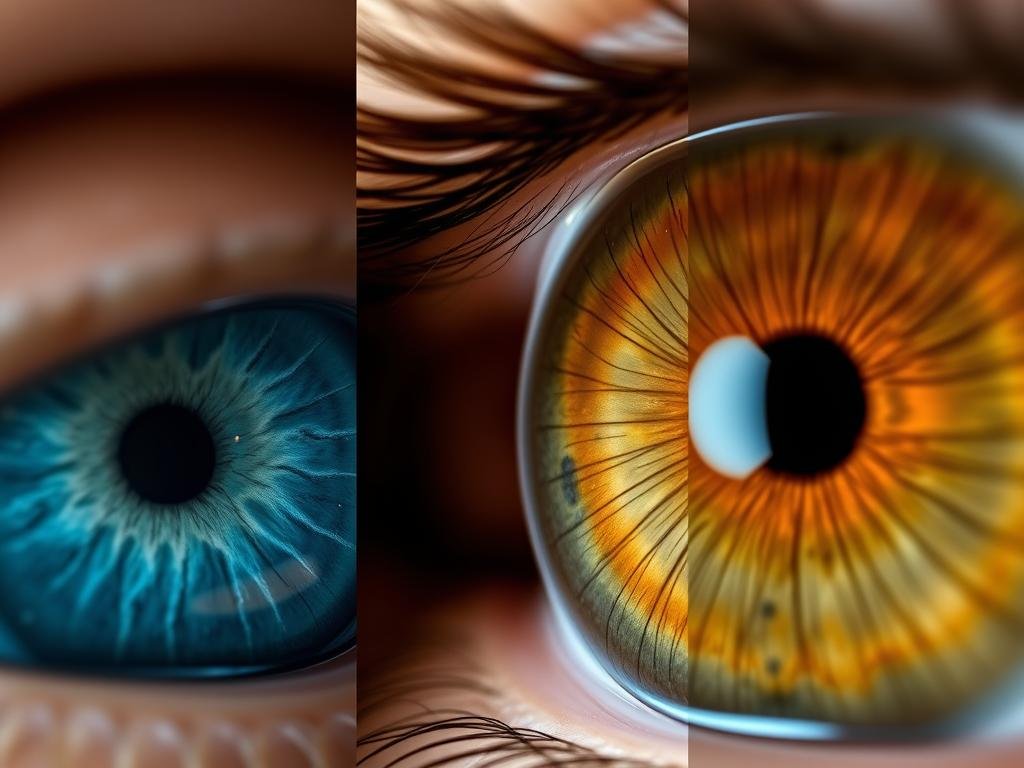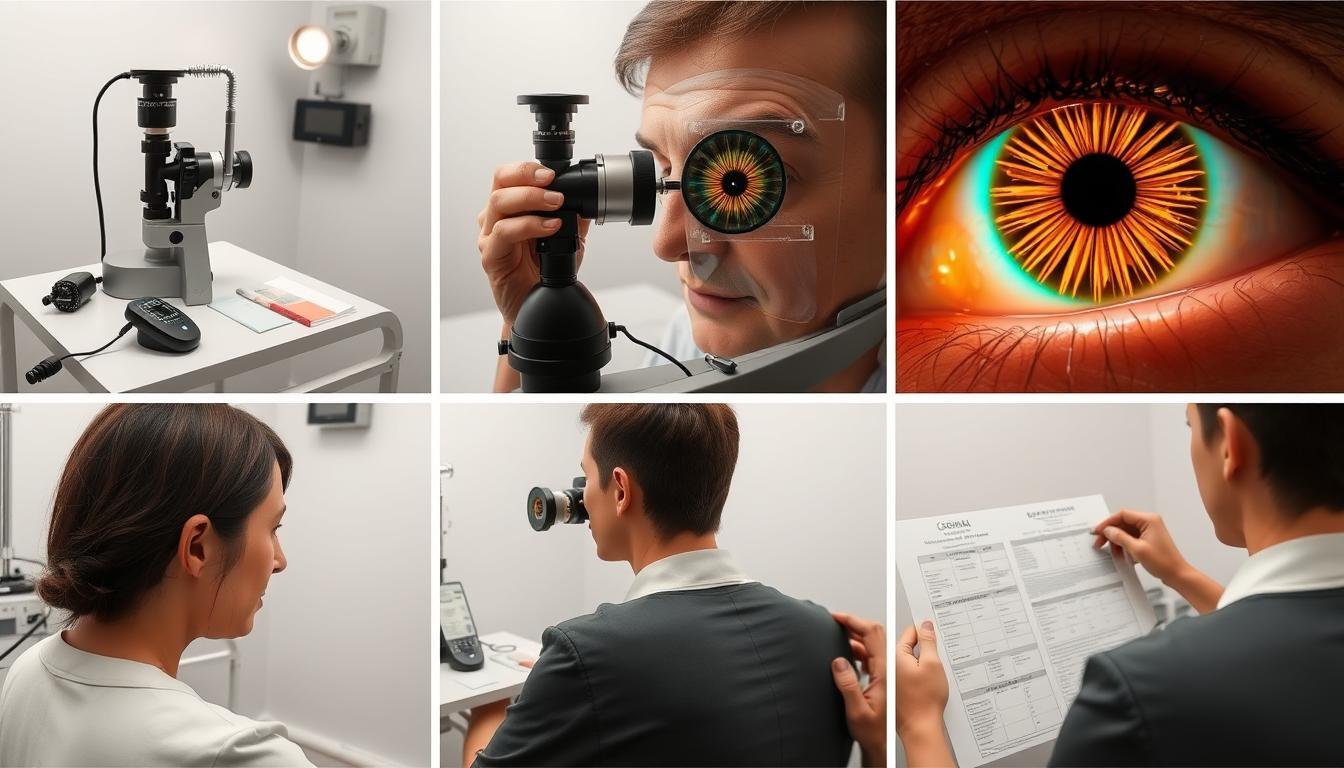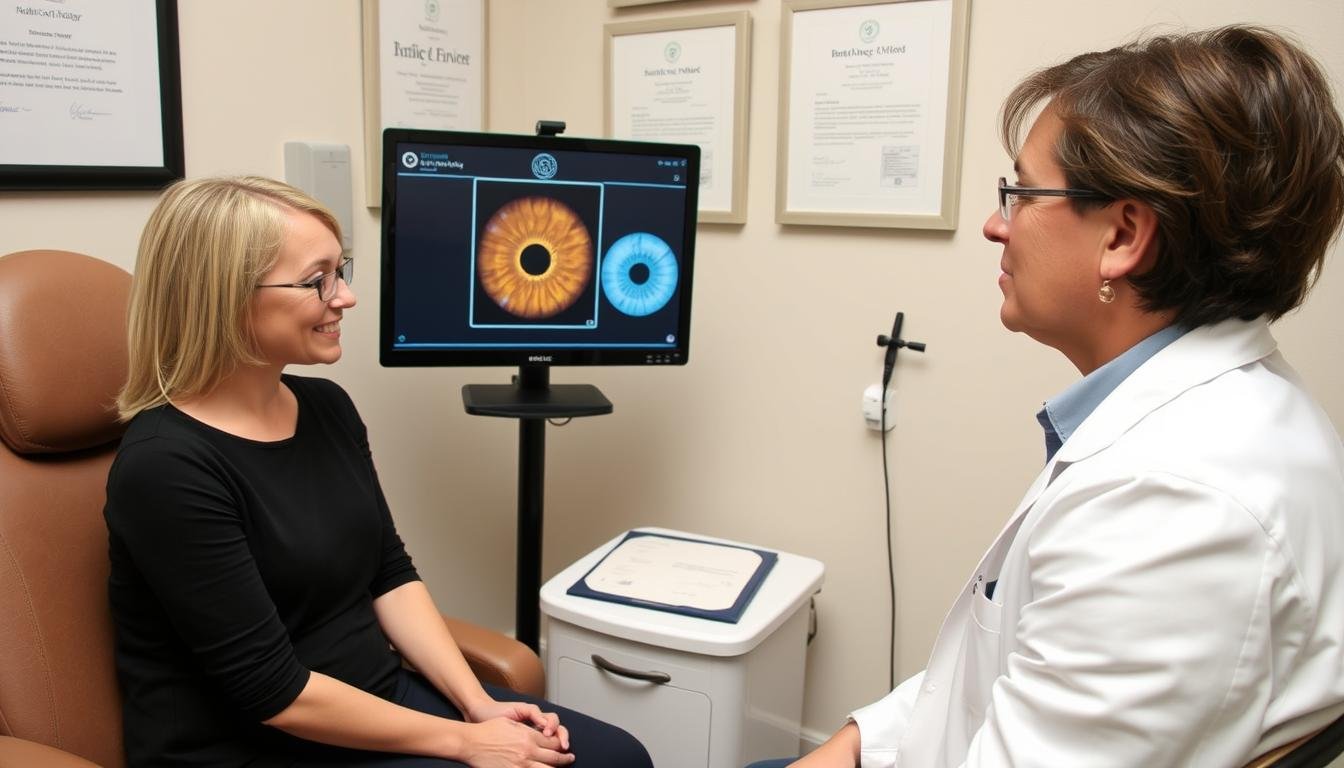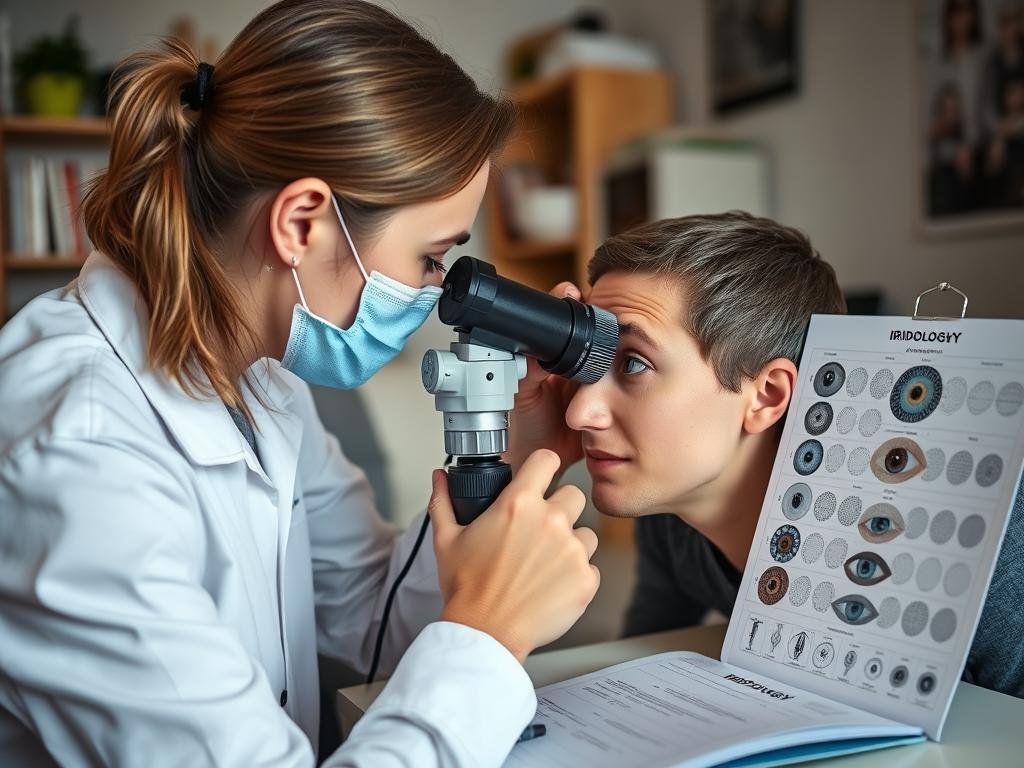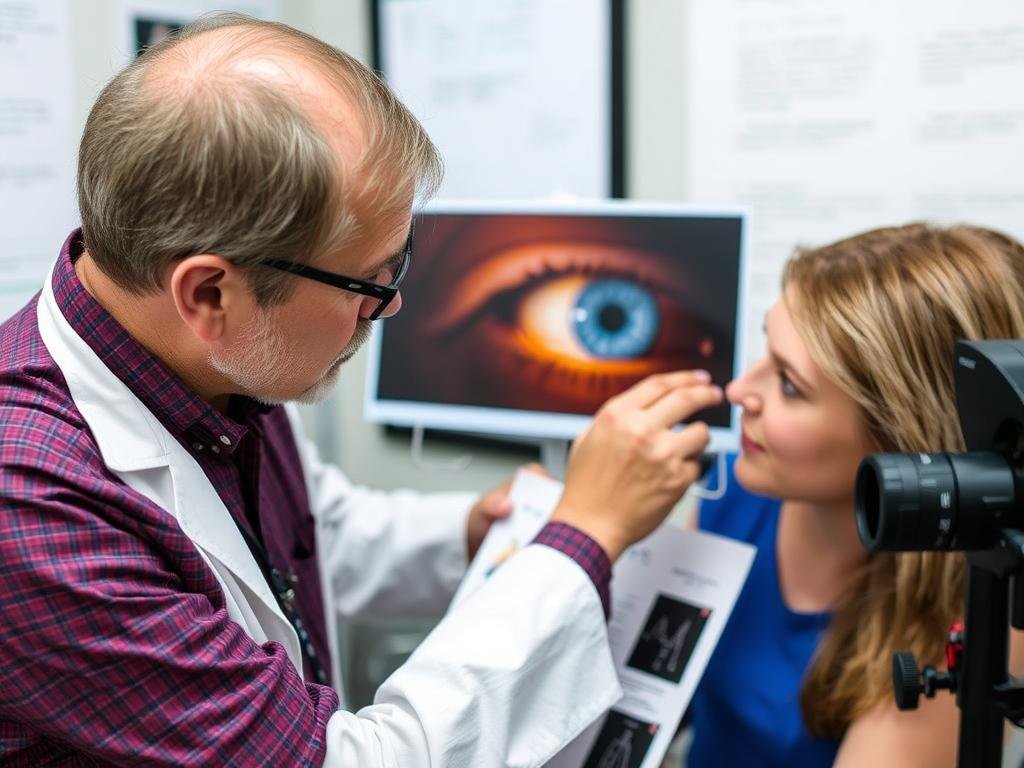What is Iridologie?
Iridologie is the study of the iris, the colored part of the eye, to determine information about a person’s health. Practitioners believe that each area of the iris corresponds to a specific part of the human body, and that certain patterns, colors, and other characteristics can reflect the condition of those corresponding body parts. Unlike conventional medical diagnostics, iridologie is considered a complementary or alternative approach to understanding health.
The practice is based on the concept that the iris is connected to every organ and tissue in the body through the nervous system and can display signs of developing health issues before physical symptoms appear elsewhere. While conventional medicine doesn’t typically recognize iridologie as a diagnostic tool, many holistic health practitioners incorporate it into their practice as a way to gain insights into a client’s overall health.

Begin Your Iridologie Journey Today
Download our free comprehensive Iridologie Chart and Beginner’s Guide to start learning this fascinating practice right away.
Télécharger le graphique gratuit
The History of Iridologie
The roots of iridologie stretch back thousands of years, with some evidence suggesting that aspects of iris analysis were practiced in ancient Egypt, China, and India. However, modern iridologie telle que nous la connaissons aujourd'hui, a commencé à prendre forme au XIXe siècle.
The most commonly cited founder of contemporary iridologie is Ignatz von Peczely, a Hungarian physician. As the story goes, when von Peczely was a child, he accidentally broke an owl’s leg and noticed a dark mark appear in the owl’s iris. Later, as the owl’s leg healed, he observed that the mark changed in appearance. This observation sparked his interest in the connection between iris markings and physical health.
Von Peczely went on to develop the first iris chart in 1881, mapping out which areas of the iris corresponded to which parts of the body. His work was further developed by Swedish homeopath Nils Liljequist, who added observations about how certain medications affected iris coloration.
In the 20th century, American chiropractor Bernard Jensen became a leading authority on iridologie in the United States, refining the iris charts and promoting the practice as a valuable tool for assessing health. Today, iridologie continues to evolve, with practitioners around the world using both traditional methods and modern technology to analyze the iris.



Iridologie Analyse graphique
At the heart of iridologie practice is the iridologie chart, a detailed map that divides the iris into zones corresponding to different parts of the body. Understanding how to read this chart is essential for anyone interested in learning iridologie.
Comprendre le Iridologie Chart Zones
The standard iridologie chart divides the iris into approximately 80-90 zones, arranged like a clock face. Each zone corresponds to a specific organ or body system. Generally, the chart is organized as follows:
- The right iris corresponds to the right side of the body
- The left iris corresponds to the left side of the body
- The outer edge of the iris relates to the skin, extremities, and circulation
- The middle zone corresponds to muscles, bones, and joints
- The inner zone near the pupil relates to the digestive system and internal organs
When analyzing an iris using the chart, practitioners look for various markings, colors, and patterns in specific zones to identify potential health concerns in the corresponding body areas. For example, a dark spot in the zone corresponding to the liver might suggest liver stress or dysfunction.
Master Iridologie Chart Reading
Get our detailed Iridologie Chart Interpretation Guide with color-coded zones and practice exercises.
Get Your Chart Guide
Common Iridologie Signs and Their Meanings
Dans iridologie, various markings, colors, and patterns in the iris are believed to indicate different health conditions or predispositions. Here are some of the most common signs that practitioners look for:
Iris Colors

The base color of your iris (blue, brown, hazel, etc.) is believed to indicate your genetic constitution and inherent strengths and weaknesses. For example, blue eyes might suggest a tendency toward lymphatic or respiratory sensitivity.
Rings and Circles

A white ring around the outer edge of the iris (called a sodium ring) may indicate salt retention or mineral imbalances. Concentric rings (called stress rings) might suggest tension or stress in the body.
Spots and Lesions

Dark spots may indicate toxin accumulation or damage in the corresponding body area. White spots might suggest inflammation or heightened activity in certain organs or tissues.
Reading Iridologie Marquages
When analyzing iris markings, practitioners consider several factors:
- Emplacement: Where the marking appears on the iris chart determines which body part it relates to
- Couleur: Darker marks often indicate more chronic or severe conditions
- Size: Larger markings may suggest more significant health concerns
- Shape: Different shapes can indicate different types of issues (e.g., radial lines vs. circular spots)
It’s important to note that iridologie is considered a tool for identifying potential health tendencies rather than diagnosing specific diseases. Practitioners use these signs to guide further investigation and support overall wellness.

Step-by-Step Iridologie Processus d'examen
Learning to perform an iridologie examination requires practice and attention to detail. Here’s a step-by-step guide to conducting a basic iridologie analysis:
- Gather the necessary equipment: At minimum, you’ll need a good quality magnifying glass (at least 10x magnification). Professional iridologists often use specialized iris cameras or slit-lamp microscopes for more detailed analysis.
- Ensure proper lighting: Natural daylight is ideal, but if that’s not possible, use a bright, white light source that illuminates the iris without causing the pupil to contract too much.
- Positionnez le sujet : Have the person sit comfortably with their head stable. They should look straight ahead with eyes wide open.
- Examine the right eye first: Gently hold the upper eyelid to prevent blinking and observe the iris thoroughly, noting its overall color, patterns, and any distinctive markings.
- Repeat with the left eye: Follow the same process, noting any differences between the two irises.
- Document your observations: Record what you see, either by taking photographs (if you have the equipment) or by making detailed notes about colors, markings, and their locations.
- Compare with an iridology chart: Use a standard iridologie chart to identify which body systems might be affected based on your observations.

Pratique Iridologie with Expert Guidance
Join our online Iridologie workshop and get personalized feedback on your practice examinations from certified practitioners.
S'inscrire à l'atelier
Problèmes de santé identifiés grâce à Iridologie
Les praticiens de iridologie believe that various health conditions can be identified through iris analysis. While scientific validation is limited, these are some of the common health issues that iridologists look for:
| Condition | Signe de l'iris | Localisation sur Iris |
| Hypertension artérielle | Ring around the outer edge of the iris (sodium ring) | Outer periphery |
| Problèmes digestifs | Dark spots or discolorations | Around the pupil (stomach zone) |
| Liver Problems | Brown spots or discolorations | Zone hépatique (iris droit) |
| Inflammation | White fibers or cloudy areas | Various, depending on affected organ |
| Weakened Immune System | Open fibers or “lacunae” | Lymphatic system zone |
It’s important to note that iridologie is not meant to diagnose specific diseases but rather to identify potential areas of weakness or stress in the body. Many practitioners use iridologie as one tool among many in a holistic health assessment.

Le point de vue scientifique sur Iridologie
Alors que iridologie has many dedicated practitioners and followers, it’s important to understand how it’s viewed from a scientific and medical perspective:
Arguments à l'appui
- L'iris contient des milliers de terminaisons nerveuses liées au cerveau
- Proponents cite case studies where iris analysis has identified health issues
- Some practitioners report high success rates in identifying predispositions to certain conditions
- As a non-invasive technique, it carries no physical risks
Scientific Limitations
- Limited peer-reviewed research supporting diagnostic claims
- Studies have found that iridologists often cannot consistently identify people with known diseases
- The iris structure is largely determined by genetics and remains stable throughout life
- Conventional medicine does not recognize iridologie as a diagnostic tool
A 1999 study published in the Journal of Alternative and Complementary Medicine found that “iridology’s efficacy was not supported by scientific evaluations.” Similarly, a study from 2000 concluded that “iridology has shown to be of little benefit to anyone.”
However, many holistic health practitioners argue that iridologie should be viewed as a complementary tool rather than a standalone diagnostic method. They suggest it can provide valuable insights when used alongside other health assessments and conventional medical testing.

Getting Started with Iridologie Pratique
If you’re interested in learning iridologie, here are some practical steps to begin your journey:
Éducation

Start with books, online courses, or workshops specifically focused on iridologie. Look for programs taught by certified practitioners with substantial experience in the field.
Pratique

Begin by examining your own iris and those of willing friends or family members. Compare what you see with standard iridologie charts and keep detailed records of your observations.
Mentorship

Connect with experienced iridologists who can provide guidance and feedback on your practice. Many offer mentorship programs or advanced training for serious students.
Developing Your Iridologie Skills
Like any skill, becoming proficient in iridologie takes time and practice. Here are some tips for developing your abilities:
- Start simple: Focus first on identifying basic iris structures and colors before moving on to more complex analysis
- Be consistent: Practice regularly to train your eye to notice subtle details
- Document everything: Keep detailed records of your observations and findings
- Stay curious: Continue learning through books, courses, and conferences
- Be ethical: Remember that iridologie should complement, not replace, conventional medical care
Begin Your Iridologie Journey Today
Download our comprehensive beginner’s guide and start learning the fascinating practice of iridologie right away.
Obtenez votre guide gratuit
Foire aux questions sur Iridologie
Est iridologie prouvé scientifiquement ?
Iridologie has limited scientific validation in conventional medicine. While some studies have been conducted, most scientific research has not supported the diagnostic claims of iridologie. However, many holistic practitioners find value in it as a complementary assessment tool when used alongside other methods.
How long does it take to learn iridologie?
Learning the basics of iridologie can take several months, but becoming proficient typically requires at least a year of dedicated study and practice. Many professional iridologists continue their education throughout their careers to refine their skills and stay updated on new developments in the field.
Peut iridologie diagnose specific diseases?
Iridologie is not designed to diagnose specific diseases. Instead, it aims to identify areas of weakness or stress in the body that might predispose someone to certain health issues. Practitioners use it to guide preventive health measures and support overall wellness rather than to replace conventional medical diagnosis.
How is iridologie different from regular eye exams?
Regular eye exams focus on eye health and vision, checking for conditions like glaucoma, cataracts, and refractive errors. Iridologie, on the other hand, examines the iris patterns to assess the health of other body systems and organs. An ophthalmologist or optometrist performs eye exams, while iridologie is typically practiced by holistic health practitioners.
Begin Your Iridologie Journey Today
Iridologie offers a fascinating perspective on health assessment through the detailed study of iris patterns. While it remains controversial in conventional medical circles, many find value in its holistic approach to understanding the body’s strengths and weaknesses.
Whether you’re interested in iridologie as a potential career path or simply as a way to expand your knowledge of alternative health practices, the journey begins with education and practice. By starting with the basics outlined in this guide and gradually building your skills, you can develop a deeper understanding of this intriguing practice.
Remember that iridologie works best as part of a comprehensive approach to health and wellness, complementing rather than replacing conventional medical care. As you explore this field, maintain an open but critical mind, and always prioritize ethical practice and the well-being of those you work with.

Take the Next Step in Your Iridologie Éducation
Download our complete beginner’s package including charts, guides, and practice exercises to master the fundamentals of iridologie.
Download Complete Beginner’s Package






